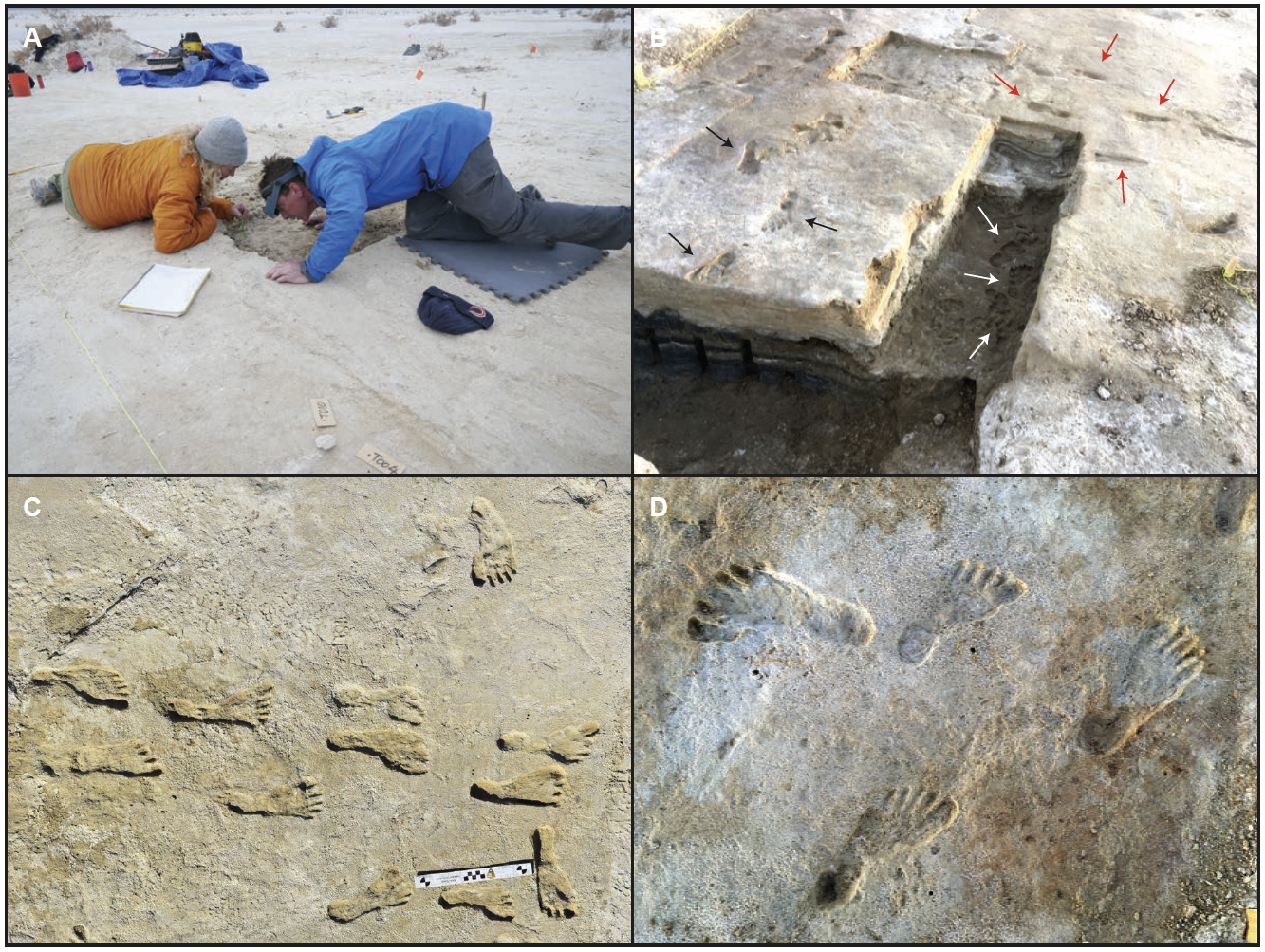The discovery of ancient human footprints in White Sands National Park and their link to abrupt climate change
This article is part of the Fall 2021 issue of the Earth Science Matters Newsletter.
A multidisciplinary team of scientists recently announced the discovery of the oldest human footprints in North America. These fossilized prints were made between 23,000 and 21,000 years ago along the shores of an ice age lake that once filled the Tularosa Basin in south-central New Mexico, in what is now White Sands National Park. This finding fundamentally changes the timeline on North American human habitation – turning back the clock of human arrival in the Americas nearly 10,000 years. What were the circumstances of this remarkable find and what allowed these footprints to be preserved, discovered, and importantly, who made them?
During the late Pleistocene (~129,000 to ~11,700 years ago), full glacial conditions were interrupted repeatedly by abrupt warming events called Dansgaard-Oeschger, or D-O events. In the southwestern U.S., D-O events caused centuries-long megadroughts, which devastated spring ecosystems, lowered lake levels, affected sea-surface temperatures and circulation patterns, and even triggered seismic activity. One of these events, called D-O 2, dates to ~23,500 years ago and was especially impactful to spring ecosystems, as water tables never returned to the same levels after the event that they had maintained for thousands of years prior.
In the Tularosa Basin, lake levels dropped dramatically during D-O 2, exposing an expansive lake margin. Humans and megafauna then walked across the patchwork of wet and dry ground, leaving behind footprints and trackways that were preserved in multiple sediment layers over the course of time.
The team studying these ancient trackways in White Sands National Park excavated a total of 61 footprints and found they were mostly from teenagers and children. The prevailing hypothesis is that the adults were performing skilled tasks at the lake edge, while ‘fetching and carrying’ were delegated to teens, who left more imprints than adults. The small children could have also simply played, making more prints.
Along with the general analysis of the footprints themselves, the study sought to determine the age of the human footprints. How long after D-O 2 were the trackways created? Luckily, seed layers of the aquatic plant Ruppia cirrhosa (ditch grass) bracketed the footprint horizons throughout the sedimentary sequence and were even found embedded within individual footprints. Using radiocarbon dating, they found the ages of these seeds, and therefore the footprints, range between ~23,000 and 21,000 years old.
One issue that must be resolved with radiocarbon dating of water-dwelling plants and animals is that these organisms can take up “old carbon” from the water, which could conceivably make these ages older than they really are – a phenomenon called “the hard-water effect.” USGS scientists explored the potential for this effect using multiple lines of geologic, hydrologic, stratigraphic, and independent chronologic evidence and concluded that there were no significant hard-water effects at play in this ice age lake, meaning the age results are robust.
These new discoveries, whose creation and preservation were made possible by an abrupt climatic event, confirm that humans were present in North America for nearly two thousand years during the Last Glacial Maximum (LGM = ~26,500 to ~19,000 years ago), adding evidence to the antiquity of human colonization of the Americas and providing a temporal range extension for the coexistence of early inhabitants and Pleistocene megafauna.
The paper, “Evidence for humans in North America during the Last Glacial Maximum” was recently published in the journal Science.



